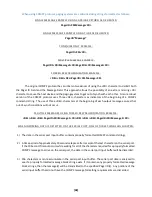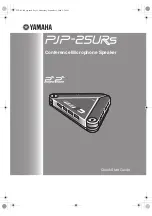
[33]
THE MESSAGE FIELD CAN BE FORMATTED AS FOLLOWS:
ALPHANUMERIC MESSAGES:
All 7-bit ASCII “non-control” characters are valid except ^, ~, and _.
NUMERIC MESSAGES:
Valid characters are the numbers 0 through 9, - (hyphen), and space.
CONTROL CHARACTERS
: these can be embedded into paging messages so that high end alpha pagers and
paging data receivers can respond with formatted displays and formatted serial outputs. Control characters
can be embedded in messages by using the
TRANSPARENCY OPTION
. The Transparency Option replaces a
control character with the <SUB> character followed by the control code offset by 40 Hex.
See Appendix D -
Embedded Control Characters
for details on how to embed control characters in paging messages.
THE ID FIELD CAN BE FORMATTED AS FOLLOWS:
1.
ID field lengths from 1 to 4 digits will cause a
PAGER DATABASE LOOKUP
. ID fields of this format must
contain numeric digits only. The numeric ID value will be compared to the ID values stored in the SPS5
Paging System’s onboard
PAGER FAMILIES
.
2.
ID field lengths from 5 to 10 digits will cause
EXTENDED ID PROCESSING
. Extended ID processing
assumes that the last 3 digits of the ID field define paging message encoding attributes, while the
preceding digits define the pager cap code.
Extended ID processing avoids having to configure and check
Pager Families
in WaveWare SPS5 v9 Series Paging Systems.
See Appendix F – Extended ID Processing
for
details on how to format the ID field.
When a host device delivers a
TAP MESSAGE BLOCK
to the SPS5 Paging System, if the message block is
properly formatted and the ID field matches an ID in the system’s Pager Families, the paging system will
respond with an initial response code as follows:
211 Page(s) Sent Successfully<CR>
. If the input buffer of
the paging system has capacity for another TAP message block, the paging system will send the following
message:
<ACK><CR>.
The response can be used as a
FLOW CONTROL METHOD
to prevent overflow and
lost messages or our alternate flow controls can be used.
THERE ARE 2 FLOW CONTROL METHODS:
HARDWARE FLOW CONTROL MODE
: The RS-232 CTS signal will be de-asserted when the input buffer
doesn’t have capacity for another TAP Message Block, and re-asserted when capacity exists in the input
buffer.
SOFTWARE FLOW CONTROL MODE
: An <XOFF> Character (0x11) will be outputted in the response string
to indicate that the input buffer doesn't have the capacity for another TAP Message Block. When capacity is
available, an <XON> Character (0x13) will be outputted.
















































